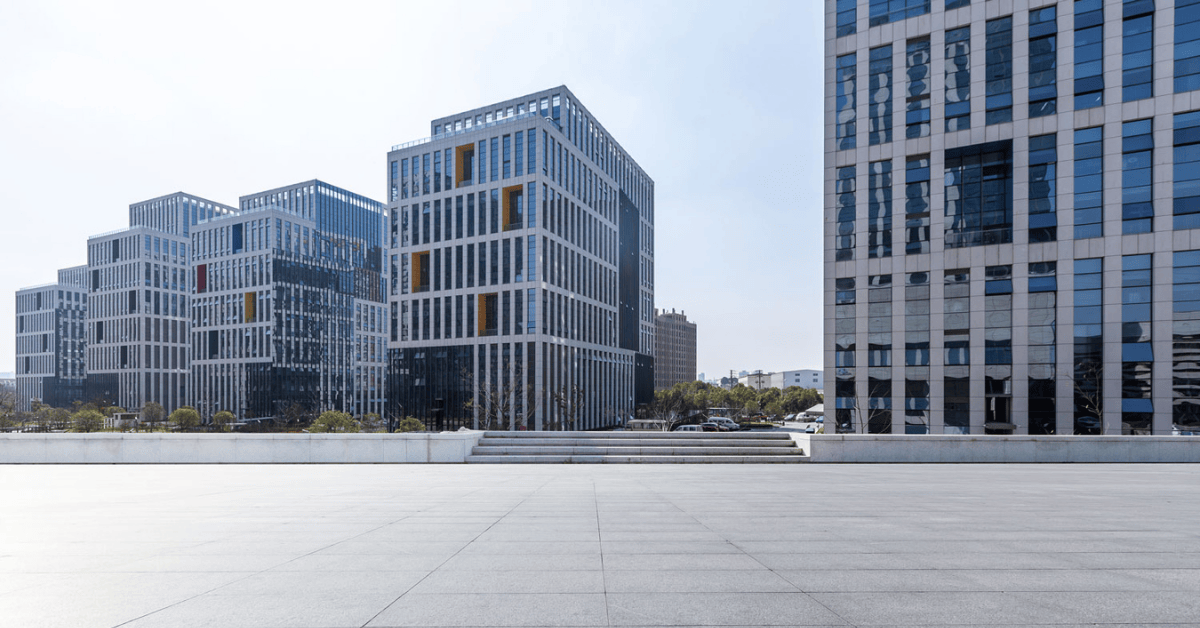How Cities Are Breathing New Life Into Empty Offices

At the height of the pandemic, white-collar workers left their city offices at rapid rates. Some say they may never return, leading developers to get creative with the now-vacant commercial office spaces.
According to Quartz, downtown vacancies in the United States’ top 10 metro areas are four percent higher than before COVID-19 hit. The Business Journals reported that the downtown office vacancy rate reached 16.3 percent in the third quarter of 2021 — the highest rate in nearly four decades.
Some experts are sounding the alarm that these office vacancies could persist as employees occupy less and less office space because of work-from-home schedules. Gallup predicts that office buildings in big cities could see as much as 37 percent fewer occupied desks than in 2019.
Faced with increasingly empty offices, city developers are considering new applications for the vacant spaces, such as converting commercial buildings into residential housing.
Adaptive Reuse Trends, By the Numbers
RentCafe found that roughly 20,100 units in older buildings became apartments by the end of 2021, nearly double the number converted in 2019 and 2020 combined. Over the past two years, more than 40 percent of the apartments have been in former office buildings. A quarter of future adaptive-reuse projects involve transforming offices into housing units.
Some government officials are even taking note, highlighting the potential for commercial-building conversions to bring relief to ongoing housing shortages. In New York, Gov. Kathy Hochul proposed revisions to the multiple dwelling law to allow more flexibility for office conversions. Hochul also expanded a federal program that converts vacant hotels into affordable housing.
For now, the push for more commercial-turned-residential projects in the Big Apple seems to be working. Two New York developers recently announced plans to transform an office building in New York’s financial district into 571 apartments, one of the city’s largest and most ambitious office conversions during the pandemic.
The City reported that at least 10 percent of Midtown’s older office space could become apartments, adding 14,000 new units to the housing supply. Meanwhile, a RAND study estimated that Los Angeles County could gain 72,000 to 113,000 apartments by converting underutilized offices and hotels.
Top Benefits of Urban Office Conversions
In addition to boosting the housing supply, repurposing obsolete offices could also have positive environmental, social and economic effects for both owners and communities. Here are four of the most commonly-referenced benefits of these conversions.
Lower environmental impact
Compared to demolition and new construction, renovating a commercial space for residential purposes has a lower environmental impact. And by moving homes into the heart of cities, where many offices are, residents might also reduce their carbon emissions by taking shorter commutes and having greater access to public transportation.
Minimal pushback from neighbors
New construction projects can be a source of frustration for neighbors. However, transforming empty or abandoned office buildings can have economic and safety benefits and may not receive the same level of opposition.
Cheaper construction costs
Repurposing an existing building can have a shorter timeline than new construction, thus helping companies save costs. Developers may also benefit from federal incentives to encourage such conversions.
Economic growth for local businesses
Vacant or abandoned buildings can be a blight for neighboring stores and restaurants. Filling those spaces with new apartments can increase the community’s vibrancy and generate revenue for local businesses.
What Makes a Property Ripe for Repurposing
Good candidates for conversion are office buildings with convenient locations, flexible zoning laws, narrow layouts and plenty of natural light.
Commercial properties often have larger communal areas — attractive to residents and marketable for developers. Similarly, office buildings frequently have high ceilings that can make for beautiful, open lofts that may feel less cramped than the average city apartment.
As employees continue to leave desks empty in high-demand areas, adapting buildings to new housing could provide a sustainable way to bring life back to the city centers.
Whether you’re a developer working on a renovation or a company ending your office lease, Armstrong can help. With top-to-bottom services and decades of commercial experience, Armstrong has the expertise and assets to keep your company on track. Get started today by calling 800.288.7396 or requesting a free quote online.
